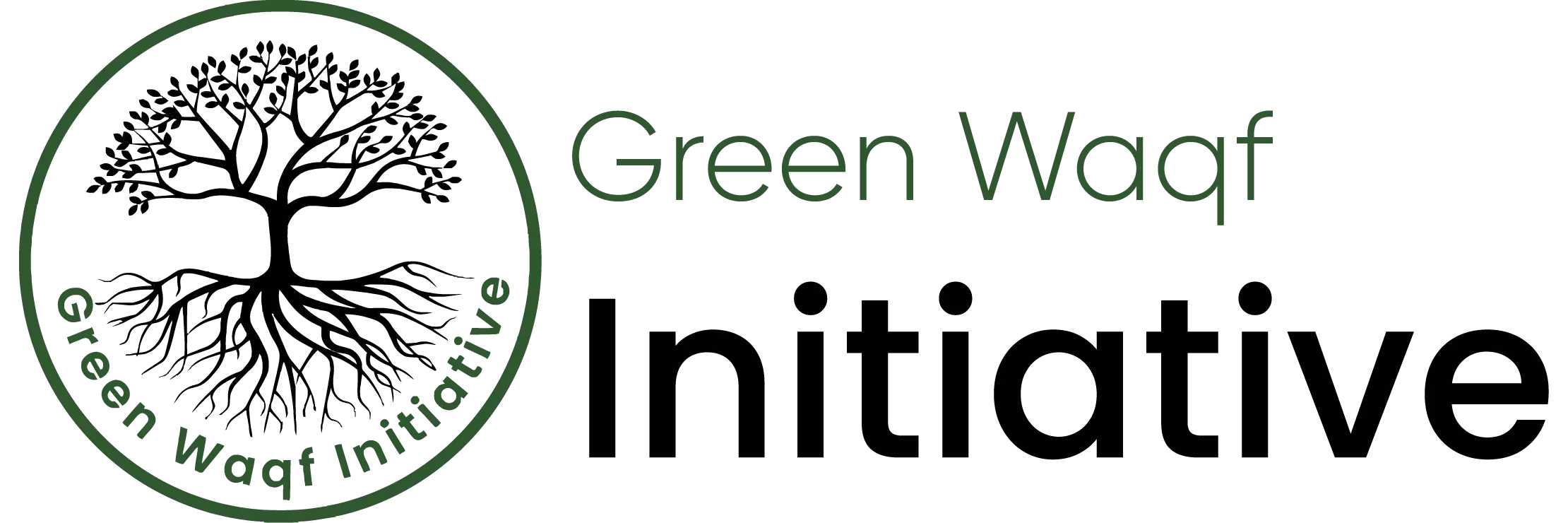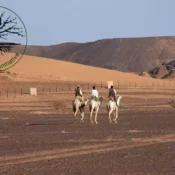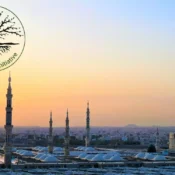
Morocco Environmental Profile
These environmental profiles were produced as part of the Green Waqf Initiative by the
Islamic Chamber of Commerce, Industry and Agriculture (ICCIA). ICCIA believes that
the Islamic concept of Waqf can be used as a social financing mechanism to combat
climate change. Through Waqf, the land is decommodified; therefore, it can be used
only for specific purposes defined by the owner. These purposes can include
reforestation, land revitalization and research centers, among others.
This environmental profile has been developed to assess the ecological situation in
Morocco and is part of a series that covers all ICCIA member countries. These profiles
are meant to be used as a source to assist in policy dialogue, stakeholder engagement,
and strategic planning and to help educate and raise awareness about the social,
cultural and economic risks associated with climate change. The profiles provide
relevant information on pertinent public and private sector policies and programs and
the country's adaptation priorities and potentials.
Morocco Environment Profile Team
Author: Fatima Faisal
Editor: Safia Hussain
Table of Contents
- Morocco Environment Profile
- Morocco Environment Profile Team
- Section 1: Country Overview
- General Overview of Morocco
- Climate change risks
- Morocco’s commitments towards climate change
- Section 2: Sector-wise climate change causes and effects
- Agriculture
- Water
- Fisheries
- Conclusions & Recommendations
About ICCIA
The Islamic Chamber of Commerce, Industry, and Agriculture, an institution affiliated with the Organization
of Islamic Corporation (OIC), aims to strengthen collaboration in the fields of trade, commerce, information
technology, banking, insurance, shipping, joint venture, and many others within member countries.
ICCIA is the sole representative of the private sector in 57 Islamic member countries and primarily focuses on
creating a knowledge platform for the private sector of the Muslim countries to connect and learn. It provides
visibility to the star performers for future growth and access to new markets. Additionally, it lays out policy
recommendations to enable a private-sector-friendly business environment in policies, processes, paperwork,
and payment system integration, to name a few. Finally, ICCIA plays an integral role in promoting member
country products and increasing access between home and foreign markets.
About the environmental profile
Several experts claim that insufficient climate control policies have become a 'very serious' concern and have
been significantly harming a considerable proportion of the world's population.1 Some top reasons behind
climate change include heat-trapping greenhouse gasses, deforestation, use of heavy machinery, powering
buildings, and cutting down on farming livestock.
ICCIA's recent initiative focuses on promoting environmentally friendly and sustainable practices in member
countries to enhance societal impact, minimize waste, and improve living standards.
Although Morocco has enjoyed stable and steady economic growth in the past couple of years, climate
variability is still a highly rising concern in several climate-sensitive sectors of the country.
Section 1: Country Overview
General Overview of Morocco
Located in North Africa and bordered with Spain, Algeria, and Western Sahara, Morocco operates under a
parliamentary constitutional monarchy and is a significant member of the league of Arab States. Morocco,
home to the world’s largest desert (The Sahara Desert), is mostly a mountainous country offering a rich culture blend of Arab, Berber, European, and African regions.
Population in Morocco equals almost 35 million, major languages spoken include Arab, Berber, French, and Spanish, and the dominant religion practiced is Islam. Morocco spreads over an area of nearly 710,850 sq km with the Atlas and Rif mountains located on the northern coast.2 Toubkal, Ouanoukrim, and M’Goun are Morocco’s highest mountains with respective of heights 4,167m, 4,089m, and 4,071m.3
Waqf is a crucial part of Morocco’s history and culture. However, waqf in Morocco is still largely considered as a religious exercise. While there are similarities between the Moroccan waqf and the trust, they differ conceptually in many ways, most notably in their views on ownership and endowment duration. It is important to understand that the distinctions are numerous, particularly in terms of ownership structure, legal personality, and perpetuity rules, and others
Climate Change Risks
According to the United Nations intergovernmental Panel on Climate Change (IPCC) 4th assessment report, Morocco has been identified as one of the most highly vulnerable countries to climate change. An increase in average temperatures, extensive heat waves, altering rain conditions, high rainfalls, increased flooding, and sea level rise are the major factors contributing to Morocco’s rising climate change concerns.
Another recent distressing situation Morocco has been facing is the gradual decrease in mountain snow cover due to changing temperatures. Dry spells have grown longer, especially at the end of the rainy season. It is predicted that annual rainfall will continue to diminish in the twenty-first century, affecting large parts of the country. Projections show a 10% to 20% decrease in average precipitation across the country, including a 30% decrease in the Saharan region by 2100.4 It is also reported that by 2100, dry periods will be extended by five days.
The following graph shows the average monthly temperature and rainfall of Morocco between 1991-2020.5

The following figures show the mean annual temperature and (°C) (left); Annual Precipitation (mm) (right) for 1991–2020.6

Morocco’s Commitments Towards Climate Change
2014 Framework Law No. 99-12 on the National Charter for Environment and Sustainable
Development
The 2014 Framework Law has been Morocco’s most dominant commitment towards strengthening its
environmental position and eliminating climate change risks. The law foresees several essential legal reforms and development in Morocco. Some important ones include:
- Adapting water legislation to meet the needs of sustainable development and the combined effects of
desertification and climate change. - Legislation must be updated to ensure the ecological balance of forests and forest ecosystems,
biodiversity, and the conservation of animal and plant species. - Enhance the protection and conservation of natural resources and the environment, biodiversity, and
cultural heritage, as well as the prevention and control of pollution and nuisances. - The revision of waste legislation to strengthen aspects related to waste reduction at origin, the
establishment of a selective waste collection system, the advancement of waste remediation, and the
incorporation of the principle of extended producer responsibility and the ecological management of hazardous wastes
Primarily, the Charter law includes institutional and policy provisions for budgetary incentives for
environmental preservation, sustainable growth projects, and research and development along with substantive areas to be covered by legislative developments.7
National Sustainable Development Strategy (NSDS)
The NSDS was adopted in Morocco in 2017 as a result of a firm commitment to bringing sustainable
development to successful conclusion. A national strategy for sustainable development demonstrates the
nation's support for all players, public and private, in their sustainability efforts, each in their own area of
responsibility concentrating on the strategic options and indicators constituting a broad consensus. The
ultimate goal is to make a country's international commitments with national, cross-cutting, or sectoral policies readable and coherent.8
These sustainable development commitments have resulted in a series of reforms aimed at laying
robust foundations for economic growth, enhancing social conditions, and speeding up environmental progress through both preventive and corrective measures.
Nationally Determined Contributions (NDCs)
Morocco estimates that it will need USD 38.7 billion to decrease greenhouse gas emissions alone in its
Nationally Determined Contributions (NDCs), which were revised in 2020. Climate change adaptation
measures necessitate at least USD 35 billion in funding for the most climate-endangered areas up to 2030.9 However, the planned adjustment measures have not yet been estimated in all segments of the economy.
Morocco's revised NDC emphasizes adaptation. Morocco intends to devote at least 15% of its budget to
adaptation programs in the most affected sectors, including water, agriculture, fisheries and aquaculture,
forestry, and the most susceptible environments and ecosystems.
2050 Vision Projects
The 2050 vision projects aim to support Morocco in curating its long-term climate strategy in two primary
phases including:
- Designing and editing of a long-term vision: gather the perspectives of all stakeholders and determine
their expectations for low-carbon development. - Creating a low-carbon strategy.
The head of Government stated that the low-carbon 2050 strategy sets robust guidelines for economic sectors
to eliminate their carbon footprint through renewable energy.
The head of Government stated that the low-carbon 2050 strategy sets robust guidelines for economic sectors to eliminate their carbon footprint through renewable energy.
Section 2: Sector-Wise Climate Change Causes And Effects
Agriculture
Most of Morocco’s economy is Agri-based with a huge chunk of population employed in agriculture.
Agriculture accounts for nearly 15% of Morocco's GDP and employs roughly 45% of the country's workforce when combined with the fishing and forestry industries. It has a disproportionate economic impact due to highly variable rain-irrigated grain production, its role as an employer, and its role as a major export industry.
Agriculture continues to be an important sector for Morocco's economy, food security, and rural livelihoods. However, the sector has suffered as a result of high population growth and increasingly erratic rainfall patterns, which have pressed production to vulnerable and degraded land. 87% of the country's crop total production is still rainfed, making it extremely vulnerable to increased rainfall variability.10 Hotter conditions are expected to raise crop needs by up to 12%, increasing irrigation demand and putting additional strain on limited water resources. Drought also encourages the spread of the Hessian fly, raising the probability of wheat yield loss. Temperature increases are predicted to decrease rainfed drop yields by 50%-75% during dry years.11
Water
Temperature increases are estimated to lower stream flows and water availability; water scarcity (particularly in the south) is possible as early as 2020. Reduced mountain snowpack will result in a seasonal shift in water availability and an increased likelihood of flooding in October and November, but less water availability throughout the rest of the year.
With irregular precipitation and elevated drought conditions, we can anticipate more rapid spring melt, reducing seasonal snowmelt supplies for lowland areas. It is likely to increase irrigation demand while also hastening dam siltation due to heavy rainfall and riverbank erosion.
Climate change has a considerable impact on the availability of water resources in Morocco. A water resources management policy promotes national efforts toward the effective, egalitarian, and optimum exploitation of existing water resources. Morocco has adopted its National Water Strategy to increase water resource demand management and efficiency through irrigation projects.
Fisheries
The fishing industry is one of the primary pillars of the Moroccan economy, yet it is still vulnerable to the
detrimental effects of climate change. A world bank report on Climate Change and Fisheries in Morocco,
given the strategic importance of the industry and the Moroccan government's intention and commitment, enhancing and deepening knowledge of the impacts of climate change on the Moroccan fisheries sector is required.12
Some proposed policy measures include improved prevention by strengthening measures for fishery
management, improved research efforts, and enhancing the National Strategy for Integrated coastal Zone.
Conclusions & Recommendations
There is no doubt that Morocco is becoming an economically powerful country. However, in order to achieve its goals and objectives sooner and more efficiently, it is essential for Morocco to rapidly work on its climate change policies and implement sufficient adaptation programs especially in climate-sensitive areas.
Working with different industries and governmental sector to improve and implement policies would be the best way to reduce the effect of climate change on the overall Moroccan economy. It would be ideal to start climate change planning with the agriculture sector given it is currently the most significant industry in Morocco.



